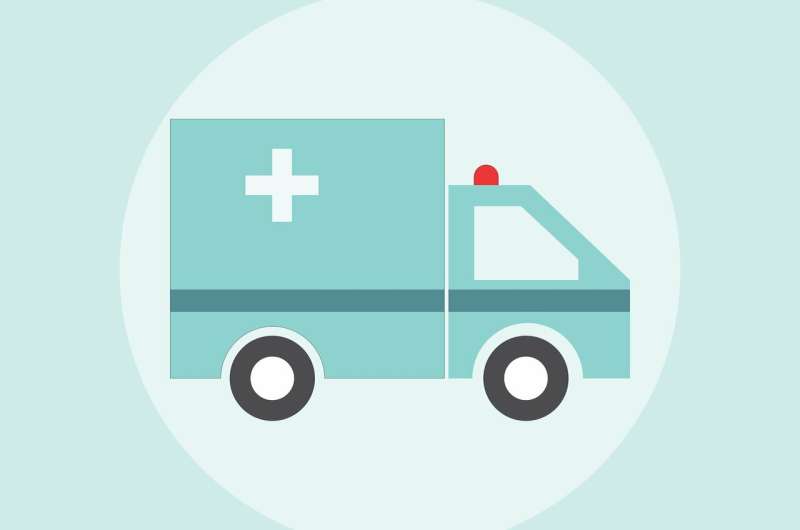Study highlights global burden of emergency diseases and conditions

In 2015, about half of the world's 28 million human deaths were the result of medical emergencies, with the bulk of the burden borne by poorer nations, according to a statistical analysis of information from nearly 200 countries by a Johns Hopkins Medicine researcher. The analysis, described in April in the journal BMJ Global Health, offered what is believed to be a first-of-its-kind look at the lethal impact of medical emergencies worldwide.
"In terms of global health, most of the research has traditionally focused on primary care and disease prevention, and emergency care has not been a priority," says Junaid Razzak, M.B.B.S, Ph.D., professor of emergency medicine at the Johns Hopkins University School of Medicine and director of the Johns Hopkins Center for Global Emergency Medicine. "We believe our study is among the first to identify the scope of the burden emergency medical conditions—combining injuries, strokes, heart attacks and lung infections—impose overall and in specific countries." The results, he added, could lead to future public health strategies that save lives and redirect resources.
In their study, Razzak and fellow researchers started with morbidity and mortality data involving more than 30 emergency medical conditions in 195 countries. The data were drawn from the 1990 and 2015 Global Burden of Disease (GBD) studies, an internationally collaborative database of hundreds of medical condition statistics housed at the Institute for Health Metrics and Evaluation at the University of Washington and commonly used by researchers around the globe. In general, an emergency condition was defined as those requiring interventions within minutes to hours to reduce the chance of disability and death and improve health outcomes.
Razzak and his team's results show a 6 percent increase in deaths of adults and children due to emergency conditions between 1990 and 2015. Over the 25-year period, the most significant decrease was found in upper-middle-income countries, and the lowest level of decrease—between 11 and 15 percent—in poorer nations. Overall, the mortality burden of medical emergencies was found to be more than four times to five times higher in low-income countries around the world compared to high-income countries.
Globally, injuries from accidents, falls and burns (22 percent), heart attacks (17 percent), lung infections (11 percent) and strokes (7 percent) made up the top emergency conditions and diseases in 2015. Other conditions such as diarrheal diseases and malaria had a lower overall global burden, but were more prevalent in low-income countries. The analysis also showed that emergency diseases affect men much more than women, and half of all the emergency disease burden was among people younger than 45 years old.
Countries with the lowest mortality and morbidity burden of medical emergencies included Bahrain, Israel and Kuwait, while Chad, Niger and Mali had the highest burdens. China, India and the United States, the three most populous countries studied, were ranked globally at 64th, 144th and 47th out of 195, respectively, in terms of the lowest burden of emergency diseases. "The level of disparity between richer and poorer nations is significant, and should not be acceptable to the global community," Razzak says.
To determine the statistics, the researchers developed two novel "indicators"—the Emergency Disease Mortality Rate (EDMR) and the Emergency Disease Burden (EDB)—designed to standardize, measure and rank the scope and scale of emergency care and deaths at national, regional and global levels. The EDMR is based on deaths caused by about 30 selected emergency conditions, and was calculated using a computer algorithm, or formula. The EDB is a separate computer algorithm using disability adjusted life years (DALYs), the total number of years lost due to death or disability based on the life expectancy of a healthier population, or the years of lost life (YLL), which estimates the average years a person would have lived if not for premature death.
Razzak cautions there are limitations in interpreting the statistics because some emergency conditions have chronic precedents and components. He says hypertension, for example, can become an "emergency" stroke even after years of "silent" impact if it's untreated or undertreated. Still, he hopes the research appeals to policymakers and enhances investments in emergency care, whether in ambulance systems or in the emergency departments themselves. "As policymakers start to focus and improve emergency care, we hope fewer lives will be lost," he says.
More information: Junaid Razzak et al. Global, regional and national burden of emergency medical diseases using specific emergency disease indicators: analysis of the 2015 Global Burden of Disease Study, BMJ Global Health (2019). DOI: 10.1136/bmjgh-2018-000733

















